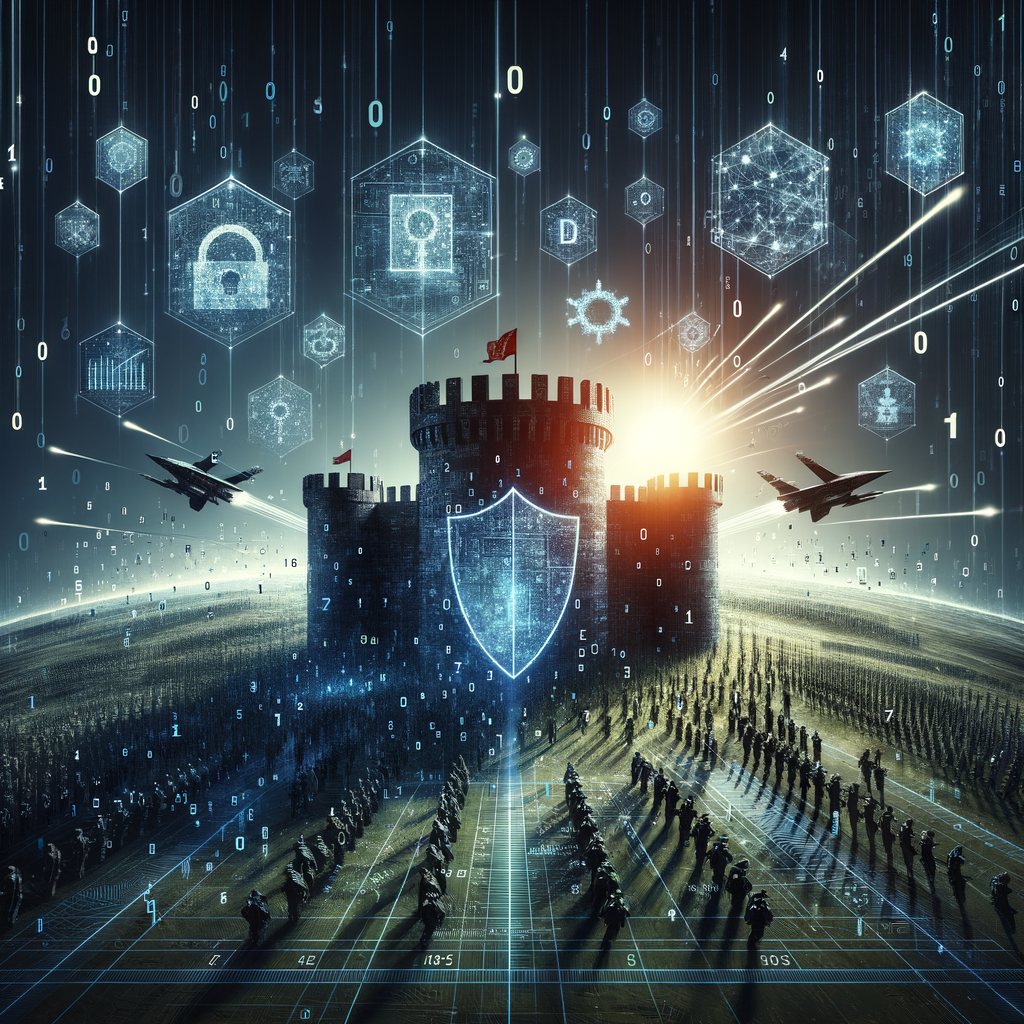One of the biggest challenges facing the defense industry today is the rise in cybersecurity threats and the need to secure an increasingly complex digital landscape. As more defense systems become interconnected, the risk of cyberattacks has grown exponentially, presenting unique challenges to both defense contractors and government agencies alike. Let’s dive into some of the most common questions surrounding this issue and explore how the defense industry can tackle the ever-evolving cybersecurity landscape with resilience and innovation.What makes the defense sector a prime target for cyberattacks?It’s no secret that the defense industry is one of the most attractive targets for cybercriminals and state-sponsored hackers. The reason is simple: the stakes are incredibly high. Defense systems manage sensitive, classified information, whether it’s about military capabilities, technological advancements, or strategic operations. A successful cyberattack on defense networks could compromise national security, disrupt military operations, and even put lives at risk. Moreover, with the rise of digital transformation across the industry, many defense systems are becoming increasingly connected through the Internet of Things (IoT), AI-powered technologies, and autonomous platforms. Unfortunately, each new layer of connectivity creates additional entry points for adversaries. This heightens the risk of data breaches, ransomware attacks, and espionage, making the defense sector particularly vulnerable.Why is cybersecurity so challenging for defense organizations?Several factors make cybersecurity a particularly tough nut to crack for the defense sector:- **Legacy Infrastructure**: Many defense organizations operate on legacy IT systems that are outdated, and integrating modern cybersecurity solutions with these systems can be incredibly complex. Retrofitting old tech with modern defenses isn’t as simple as flipping a switch.- **Supply Chain Vulnerabilities**: The defense supply chain often involves numerous third-party contractors, each with its own cyber risk profile. Attackers may exploit weaknesses in the supply chain to gain access to more secure systems.- **Insider Threats**: Both intentional and unintentional insider threats pose a significant risk. Employees or contractors with access to sensitive data may inadvertently click on a phishing link, or, worse, disgruntled insiders could actively work against their own organization.- **Sophisticated Adversaries**: Advanced Persistent Threats (APTs) are a growing concern. These are sophisticated, state-sponsored attacks that embed themselves within networks for long periods, gathering intel or waiting for the right moment to inflict damage.- **Compliance and Regulatory Overlap**: The defense industry is one of the most heavily regulated sectors. While necessary, adhering to various cybersecurity standards and frameworks, such as NIST or CMMC (Cybersecurity Maturity Model Certification), can be a logistical nightmare, especially for smaller contractors.How do we address cybersecurity for multi-domain operations?With the military increasingly operating across multiple domains—land, sea, air, space, and cyber—there’s a greater need to ensure that these interconnected domains are secured. Cybersecurity needs to be integrated from the ground up. Some key strategies include:- **Zero Trust Architecture (ZTA)**: This security framework ensures that no entity, inside or outside the network, is trusted by default. Every user, device, and application must be verified before accessing resources. This is particularly important for multi-domain environments where different systems are connected.- **End-to-End Encryption**: For highly sensitive communications and data transfers, employing end-to-end encryption ensures that information is protected while in transit between domains, whether it’s over satellites, ground networks, or naval systems.- **AI-Driven Cybersecurity**: Artificial intelligence can be used to proactively detect potential cyber threats, identify vulnerabilities, and predict where attacks might occur. AI can also automate incident response, reducing human error and increasing efficiency.- **Cross-Domain Solutions (CDS)**: These are specialized systems that ensure secure information sharing across various domains and classification levels, enabling critical data to flow safely without compromising security.Can defense organizations really defend against insider threats?Managing insider threats is one of the most difficult aspects of cybersecurity for defense organizations. There are several ways to combat these threats, but it requires both technological tools and a strong security culture. – **User Behavior Analytics (UBA)**: Tools that employ machine learning to monitor and analyze user behavior can flag unusual activities, such as an employee accessing files they don’t typically need or logging in at odd hours. This helps in identifying potential insider threats before they cause damage.- **Regular Security Training**: Employees are often the weakest link in cybersecurity. Offering regular, up-to-date security training on phishing, password management, and social engineering can go a long way in preventing accidental data breaches.- **Access Control Management**: Implementing role-based access control (RBAC) ensures that individuals only have access to the information necessary for their job. Limiting access reduces the chances of sensitive data being exposed.- **Privileged Access Management (PAM)**: This involves securing, controlling, and monitoring privileged accounts—those that have elevated access to systems. These accounts are among the most targeted by hackers and need additional layers of protection.What role do contractors play in defense cybersecurity?Contract





